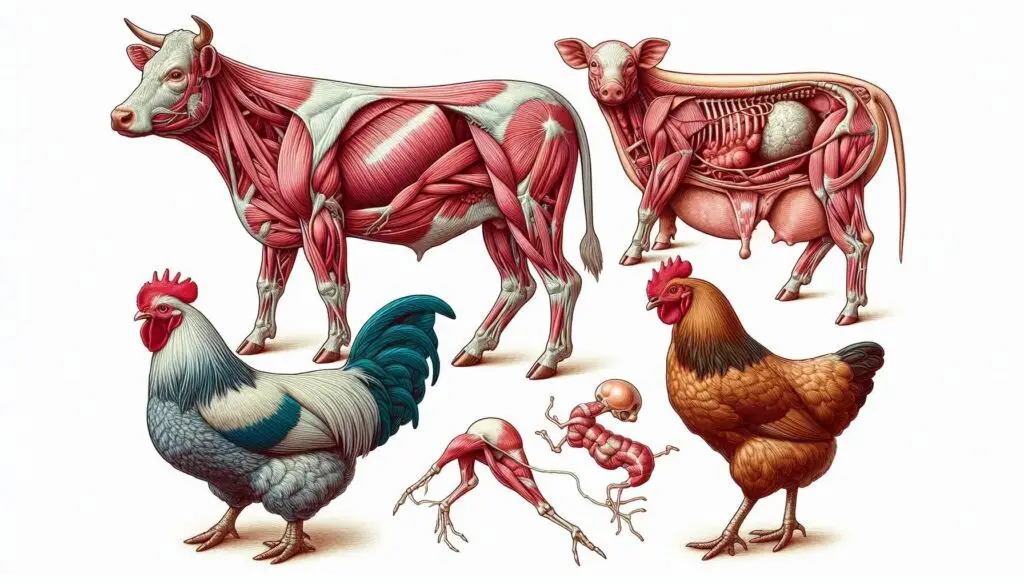The Essential Role of Manganese in Livestock Health

What is Manganese?
Manganese is a trace mineral found in soil and various feed ingredients. It is essential for many biological processes, including bone formation and enzyme activation. Livestock require manganese in small amounts, typically measured in parts per million (ppm).
Why is Manganese Important?
Manganese serves several key functions:
- Bone Development: It aids in forming strong bones and cartilage.
- Enzyme Activation: It activates enzymes that are vital for metabolic processes.
- Antioxidant Defense: Manganese supports the immune system by combating oxidative stress.
The Role of Manganese in Livestock Health
1. Bone Development
Manganese is essential for healthy bone formation. It helps produce glycosaminoglycans, which are crucial for cartilage structure. A deficiency can lead to weak or deformed bones, particularly in young animals.
2. Reproductive Health
Manganese plays a vital role in reproductive performance. It affects fertility rates and can lead to complications during gestation. Livestock with inadequate manganese may experience:
- Reduced Fertility: Lower conception rates can occur.
- Stillbirths: Increased rates of stillbirths may be observed.
- Low Birth Weights: Offspring may be born underweight.
3. Enzyme Activation
Manganese acts as a cofactor for numerous enzymes involved in metabolic pathways. These enzymes are crucial for:
- Carbohydrate Metabolism: Manganese helps break down carbohydrates efficiently.
- Fat Metabolism: It aids in processing fats for energy.
- Antioxidant Function: Manganese superoxide dismutase (MnSOD) protects cells from oxidative damage.
Symptoms of Manganese Deficiency
Deficiency symptoms can vary among species but generally include:
In Cattle
- Joint Issues: Cattle may develop joint laxity or deformities.
- Gait Abnormalities: Newborn calves may struggle with mobility.
- Bone Deformities: Weak or malformed bones can occur.
In Sheep
- Impaired Growth: Lambs may show stunted growth.
- Reproductive Problems: Ewes may experience difficulty conceiving.
In Poultry
- Perosis (Slipped Tendon): Young chicks may develop leg deformities.
- Reduced Hatchability: Egg viability can decrease due to low manganese levels.
Diagnosing Manganese Deficiency
Diagnosing manganese deficiency involves several steps:
- Diet Analysis: Assess the dietary intake of manganese. Recommended levels are typically around 40 ppm for dairy cattle and 20 ppm for beef cattle.
- Clinical Signs: Observe animals for symptoms related to deficiency.
- Blood Tests: Although serum levels are not always reliable, they can provide additional information.
Strategies for Manganese Supplementation
To prevent deficiencies, consider these strategies:
1. Dietary Sources
Include manganese-rich feed ingredients such as:
- Grains
- Legumes
- Certain Forages
2. Mineral Supplements
Use mineral supplements to ensure adequate intake:
- Manganese Sulfate: This is a common source of supplemental manganese.
- Organic Forms of Manganese: These newer forms are increasingly used due to their higher bioavailability.
3. Soil Management
In areas with high soil pH, crops may have lower manganese levels. Implement soil management practices that improve manganese availability:
- Soil Testing: Regularly test soil to monitor nutrient levels.
- pH Adjustment: Use amendments to lower soil pH if necessary.
Conclusion
Manganese is an essential trace mineral that significantly impacts livestock health. By ensuring adequate intake through diet and supplementation, farmers can promote better growth, reproductive performance, and overall well-being in their animals. Regular monitoring and proactive management strategies will help prevent deficiencies and enhance livestock productivity. By focusing on the importance of manganese in livestock health, this article aims to provide valuable insights for farmers and animal caretakers alike. Implementing effective dietary strategies can lead to healthier animals and improved farm productivity.
For more pearls of Vets Wisdom:
https://wiseias.com/partitioning-of-food-energy-within-animals/





Responses